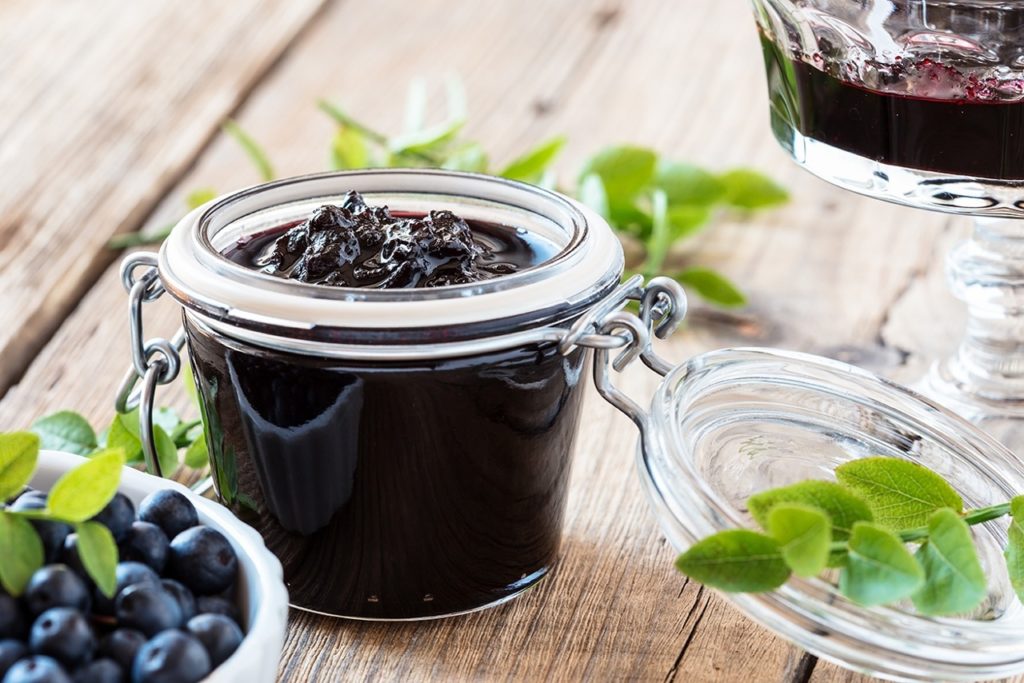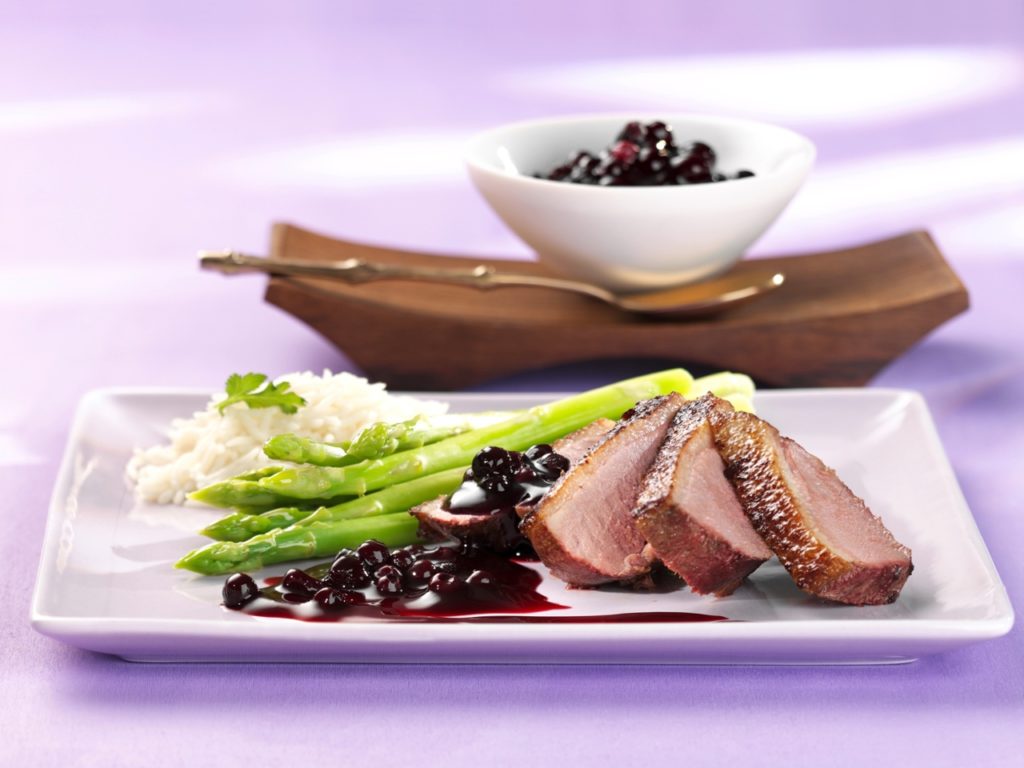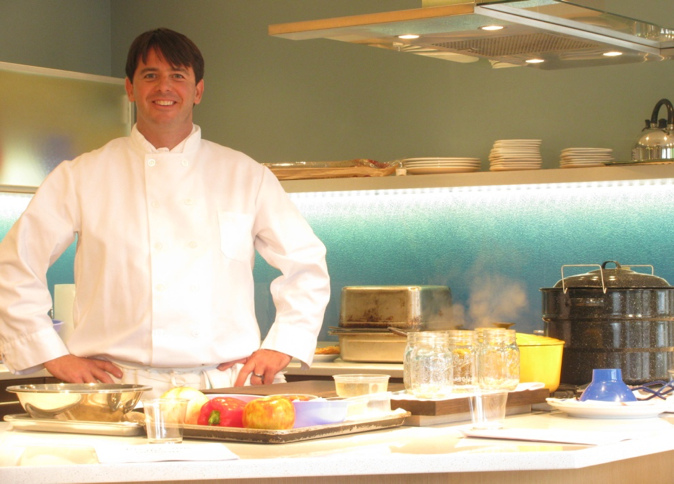Have You Tried This Hot New Food Trend? Pickling & Fermenting Wild Blueberries
Editorial consulting by the Culinary Institute of America
As a boy, I spent summers in the town of Southhold on the North Fork of Long Island. Those carefree days were filled with swimming, biking, and blueberries. Wild blueberry bushes were scattered throughout our property and neighborhood. I have vivid memories of gathering more blueberries than I could carry and proudly bringing them to my mother. She always received my bounty with gratitude, but after countless pies, cakes, and shakes she needed to get creative with ways to use all the blueberries. She taught herself how to preserve.

As a professional chef, I have a strong appreciation for the art of preservation. Several years ago, I taught a course in farm-to-table cooking at the Culinary Institute of America. It’s amazing to me how the mainstream public has now embraced this concept. Eating locally sourced and seasonal products is no longer limited to a small slice of the population. For chefs like me, this development is promising and exciting.
Preserving
For me, preserving Wild Blueberries (or any seasonal fruit) is a way to bottle the summer. By nature, food begins to spoil from the moment it’s harvested, and man developed methods of food preservation out of necessity. As chefs, we preserve to make it last longer. When done correctly, preserving prevents bacteria from forming and making our “fruit time capsule” hold on longer. Drying, curing, canning, fermenting, pickling, and freezing are all methods of food preservation. If you’ve ever tossed Wild Blueberries in your freezer to use later for smoothies or baking, you’ve used a preservation technique.
[blog_cta post_id=”16165″]
Fermenting
Fermentation is a preservation technique that is often intimidating, but intriguing to eaters. What is fermentation? Fermentation is the process of increasing the level of good bacteria in preserved food. You’ve heard of the health benefits associated with consuming probiotics. Fermented foods contain healthy bacteria which aid your digestive system, relive your body of toxins, and aid in the absorption of vitamins and minerals. Combined with massive flavor profiles and a long shelf life, fermented foods are on the rise.
Fermentation will convert carbohydrates to alcohol or organic acids using yeasts or whey. Common products that go through fermentation include beer, wine, yogurt, sauerkraut, vinegar, olives and cheese. Fermenting Wild Blueberries will provide a deep, rich flavor that will help savor the summer. Duck Confit and fermented Wild Blueberries has been a signature item on many of my menus. It’s the depth of the Duck Leg and the crunch of the crispy skin that make the Wild Blueberry pop. The deep blue color adds an amazing eye appeal that lights up the plate.

Pickling
Pickling is a similar preservation technique. Pickling is done either through fermentation within a brine or by submerging in acid and sugar. Pickled foods have a pH of 4.6 or lower to successfully kill bad bacteria. When building a menu, I always have fermented and pickled items. These methods of preserving make it easier to focus on other items that need more attention. For example, you can pickle Wild Blueberries at the beginning of the month. Now you have one component of the dish completed, and you don’t even have to think about it on busy days. It’s ready to plate. This includes chutney, relish, salsa, compote, jelly, and beyond. Paired with either savory or sweet items, these techniques will add creative components to your already creative dishes.
The natural sugar content in Wild Blueberries will work to your advantage if you use the fermentation process. The objective is to preserve the berries before they turn into alcohol. Through testing methods, I have created this recipe that is delicious and easy to prepare.
[blog_cta post_id=”16167″]
Ingredients are easy to find in specialty food stores or online shopping. The cane sugar is an unrefined sugar that’s less sweet and pairs well with juicy berries. The Celtic sea salt adds a great background sense of depth and savory. Whey is easily made by straining 1 pound of yogurt through some cheesecloth. The liquid that’s strained is whey, the yogurt that’s left over is now considered Greek style yogurt that can be used for your breakfast or Sunday brunch service. I find a lot of creative ways to use the yogurt. Pickled Wild Blueberry and Yogurt Muffins have an amazing sweet, sour, moist, and crunchy texture.
Fermented Wild Blueberries
4 pounds of fresh or frozen Wild Blueberries
1.5 cup of Cane Sugar
1 Tbsp. of Celtic Sea Salt
1 cup of Whey
Combine Wild Blueberries, cane sugar and Celtic salt in a medium size sauce pot and cook gently under a low to medium heat. Cook for 5 to 7 minutes until the berries begin to expand and pop. Remove the blueberries from the stove top and allow them to cool naturally at room temperature 70 to 80 degrees. Stir in the whey. If the mixture is too hot you may run the risk of the glass jars slightly cracking. Place the blueberry mixture into clean dry small ball jars. It’s important to leave a two-inch space between the berry mixture and the lid. This allows gas to be easily released if expansion occurs. If a lid starts to bulge, loosen it to release gas and tighten again. Store the jars at room temperature for three days to allow the berries to ferment. Now you have lacto-fermented Wild Blueberries that can be stored in your cooler for one month and used on your menus regularly and interchanged or paired with your entrees and dessert items.
About the Author
Chef Robert Mullooly
Associate Professor, Culinary Arts

Rob Mullooly is an Associate Professor in culinary arts at The Culinary Institute of America (CIA).Chef Mullooly is a 1993 CIA graduate. Before returning to his alma mater as a faculty member in 2008, he was executive chef at Antares Café in Greenport, NY and Oheka Castle in Huntington, NY; sous chef at the New York Palace Hotel in NYC; pastry chef at Cibo Restaurant in NYC; and owner of Rob’s Gourmet Sorbet in Mineola, NY. He also served in various kitchen positions at the Four Seasons Hotel in Chicago, IL, the Sign of the Dove in NYC, Garden City Hotel in Garden City, NY, The Chanticlair in Vail, Colorado, and The Brown Derby Restaurant, Disney MGM Studios in Orlando, Florida.

